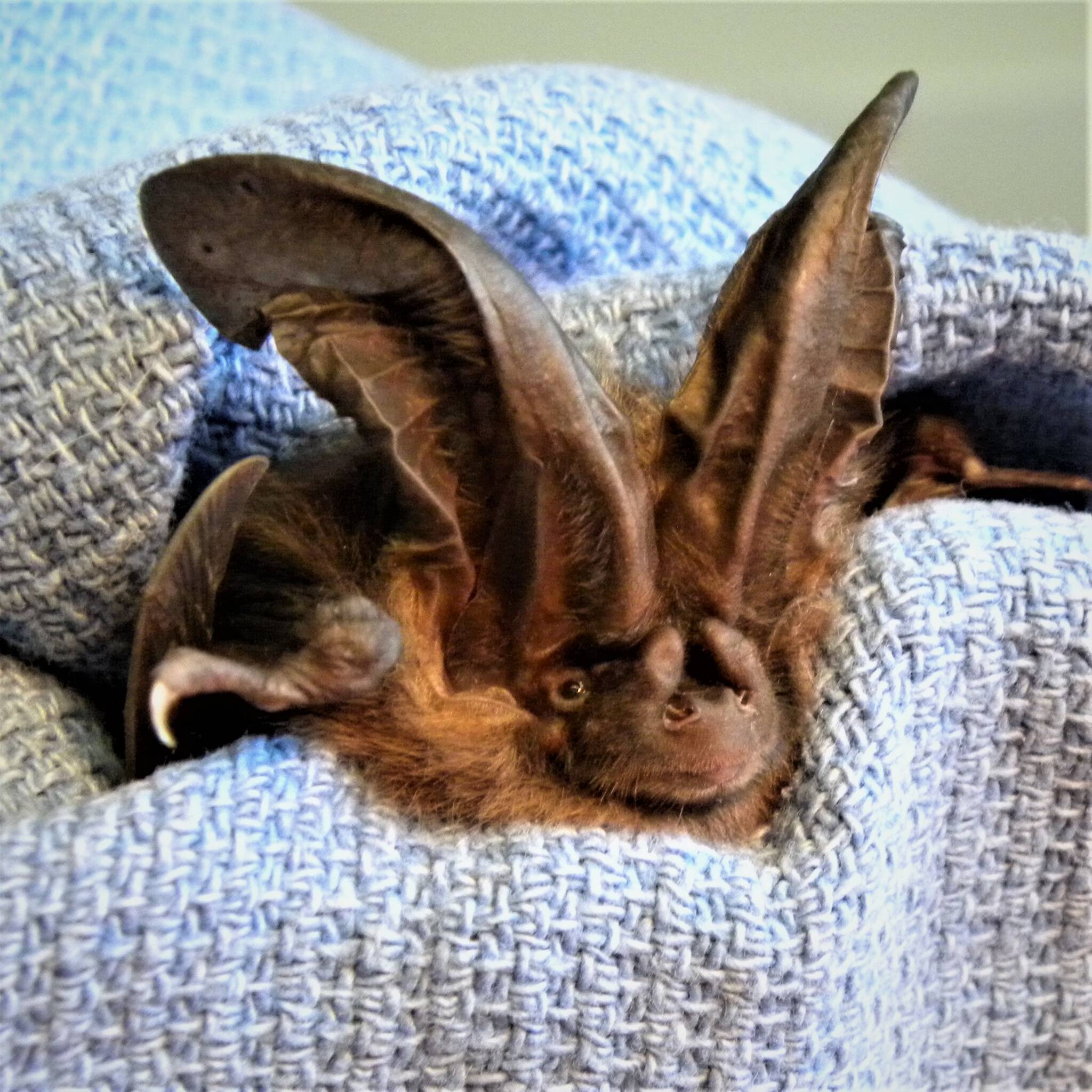Submitted by Russel Barsh, Director, Kwiaht
Look at those gorgeous ears! There is only one bat in the Pacific Northwest with long ears like a rabbit: Townsend’s Big-Eared Bat (Corynorhinus townsendii), our rarest and most elusive bat species, and very likely our most beneficial one.
On a warm summer night, you may spot a Townsend’s slowly circling above the trees, its ears distinctly visible against the darkening sky. What you cannot see—or hear, without a ultrasound bat detector—is the aerial game of hide-and-seek being played out above you by the bat and its primary prey: moths, in particular moths that feast on trees as caterpillars, such as Geometrids (“inchworms”), Noctuids (“owlet moths”), and Tortricids (“leafrollers”).
Moths are fine dining for big bats seeking calorie-rich meals. Slow-moving, fluttering moths are relatively easy targets for bats using ultrasonic chirps to scan the skies, like fish-finding sonar. Over millions of years, however, many moths have evolved ways of using their own ultrasonic pops, squeaks and buzzing to jam bats’ sonar, or to startle and distract attacking bats. This defensive behavior may have evolved from using ultrasound to communicate with potential mates, which could reveal moths’ locations to prowling bats. In moth families such as the Geometridae and Noctuidae, male moths detecting the chiros of nearby bats can switch from love songs to sonar-jamming static.
Townsend’s bats have taken this sonic game one step further. Compared with other bats, they chirp very softly at a lower frequency just above the range of human hearing when they are hunting. Their huge ears help them hear the echoes of these “whispers”. At the same time, moths are less likely to detect the bats’ approach until it is too late. Coincidentally, Townsend’s bats are difficult to track and study acoustically: they whisper while other Salish Sea bats are shouting!
These amazing bats are found throughout western North America from the Vancouver, BC area south to the rainforests of southern Mexico; but despite this extensive range, they live in relatively small, isolated clusters of colonies. In Washington, Townsend’s are a Priority Species and Species of Greatest Conservation Need; they are classified as Threatened in British Columbia.
The first Townsend’s maternity roost in our county was discovered in an unoccupied historic barn on San Juan Island in 2009, where they had been gathering for many years. A second roost was found in another historic barn, this time on Lopez Island, in 2012. Individuals have been seen in various locations on Orcas and Waldron. The estimated population in the islands is between 300 and 500, compared to tens of thousands of “mouse-eared” bats such as Little Browns and California Myotis.
Unlike other island bats, furthermore, Townsend’s colonies may move seasonally and have been known to swarm in late summer, moving from one old barn to another, as the year’s pups begin flying and hunting on their own, and males rejoin the females that have been occupied with pup-rearing since May or June. As the weather cools and the supply of moths dwindles, Townsend’s bats disperse to smaller winter roosts where they may remain sporadically active through the winter. This winter, Geometrid and Noctuid moths continued to fly in the islands’ woodlands until at least mid-January.
You may encounter a Townsend’s bat at any time of year, asleep in a barn, shed or garage, often with its ears rolled up until it awakes. Bear in mind that this gentle, curious little half-ounce mammal will eat more than 5,000 moths every summer, mainly “pests” affecting orchards, gardens and woodland. You can help keep Townsend’s Big-Eared Bats in your neighborhood by avoiding outdoor use of pesticides; and leaving patches of old conifers and native shrubs and trees such as wild crabapple undisturbed for winter habitat. If you think you have a colony of Townsend’s bats in a barn or other outbuilding, please do not disturb it. Keep your distance, and contact info@kwiaht.org for a free site visit and assessment.
Kwiaht researchers will work with you to develop a stewardship plan that’s good for bats and good for your garden!
Ask a Biologist!
If you have questions about the conservation of pest-munching bats or insect pollinators around your home, farm or garden, send an email to: info@kwiaht.org
Look in this space for future announcements of virtual and in-person learning opportunities for a healthy and productive island environment.



